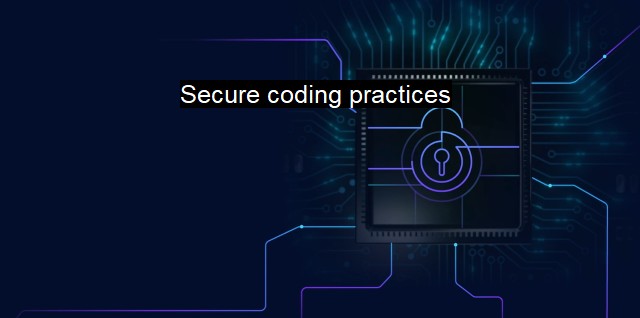What are Secure coding practices?
Fortifying Cybersecurity: The Crucial Role of Secure Coding Practices and Antivirus Software in Protecting Against Cyber Threats
Secure coding practices are methods and procedures followed during software development to enhance its security by reducing and eliminating vulnerabilities and weaknesses that could potentially be exploited by cybercriminals. The scope of secure coding extends from simple password-protected websites to complex software technologies such as antivirus and cybersecurity programs.Secure coding is an indispensable part of cyber security. Software security is no longer a post-production consideration, but an element incorporated right into the development process. It’s impossible to talk about secure software coding without looking into some of the vulnerable points that it protects. Common attacks such as injection attacks, cross-site scripting, and cross-site request forgery represent a persistent threat to software users across the world, and are continually on the watch for lax security configurations and codes to exploit. Similarly, buffer overflow attacks, insecure error handling, and misdirected delegation are some of the attack types that secure code practices address.
There’s the added vulnerability of data that antivirus software, among others, handle. Any compromise on these kinds of software exposes a lot of important data that can be used for malicious purposes. Secure coding practices are vital in minimizing the probability of such occurrences.
One such secure coding practice is input validation. Programmers use input validation to ensure that delivered data, such as login credentials, adhere to specific properties. Programs accept this delivered information only when it fits within the set parameters, making it hard for hackers to gain unauthorized access.
Secure coding also involves practices like key management which is crucial for maintaining and observing the keys used in encrypted communication. In the cybersecurity domain, encryption keys can comprise any form of code, such as a string of numbers, that deciphers data encrypted by a party for decryption by the intended recipient. If mismanaged, encryption keys have the potential to expose sensitive data. Secure coding ensures constant key management, thereby shielding confidential information from cyber threats.
Security by design is pronounced in secure coding practices. Programmers have the critical task of making specific software features hard to use in ways they are not intended to be used. Secure coding practices involve developing software based on solid principles of design aimed at attaining maximum security while offering reliable functionality.
Auditing is another aspect of secure coding practice. Post coding, the software undergoes rigorous checks to detect security flaws and weaknesses. Once identified, these flaws are rectified or patched up before software release, keeping it robust against increasing cyber threats.
In the antivirus and cybersecurity niches, secure coding practices are essential in protecting both the software itself and the data it contains. It enables the antivirus software to shield the system and its data, detect viruses and malware, quarantine or remove them, and repair the potential damage.
Secure coding can't be an afterthought; it has to be intrinsically built into the software creation process. Organisations need to integrate this as a cultural change in their software development lifecycle, training their developers in secure coding practices.
In a world where minimizing cybersecurity threats is a relentless task, secure coding practices are of paramount importance. They need to be continually learnt, implemented, and updated to keep pace with an ever-evolving cybersecurity landscape. Secure coding practices provide the blueprint that enables software to remain protected against threats, providing a haven of security in the volatile world of cyber threats.

Secure coding practices FAQs
What are secure coding practices?
Secure coding practices refer to the set of guidelines, techniques, and best practices used by software developers to ensure that the code they produce is secure from cyber attacks. Secure coding practices are designed to eliminate vulnerabilities, reduce the risk of exploitation, and safeguard sensitive data from cyber threats.Why are secure coding practices important in cybersecurity and antivirus?
Secure coding practices are essential in cybersecurity and antivirus because they help prevent security vulnerabilities and protect against cyber attacks. Without secure coding practices, software may be riddled with vulnerabilities or backdoors, which can allow hackers to exploit the system and steal sensitive data. Secure coding practices help ensure that software is designed and developed with security in mind from the outset, thereby reducing the risk of cyber attacks.What are some examples of secure coding practices?
Some examples of secure coding practices include input validation, parameterized queries, secure authentication and authorization, encryption, and error handling. These practices help ensure that inputs are checked for validity, data is stored securely, access is restricted to authorized users only, sensitive information is encrypted, and errors are handled gracefully to prevent information leakage.How can organizations promote and enforce secure coding practices?
Organizations can promote and enforce secure coding practices by providing training and resources to their development teams, incorporating secure coding practices into their software development lifecycle (SDLC), conducting regular code reviews and security assessments, and implementing a vulnerability management program. By making secure coding a priority, organizations can help reduce the risk of cyber attacks and protect their sensitive data from compromise.| | A | | | B | | | C | | | D | | | E | | | F | | | G | | | H | | | I | | | J | | | K | | | L | | | M | |
| | N | | | O | | | P | | | Q | | | R | | | S | | | T | | | U | | | V | | | W | | | X | | | Y | | | Z | |
| | 1 | | | 2 | | | 3 | | | 4 | | | 7 | | | 8 | | |||||||